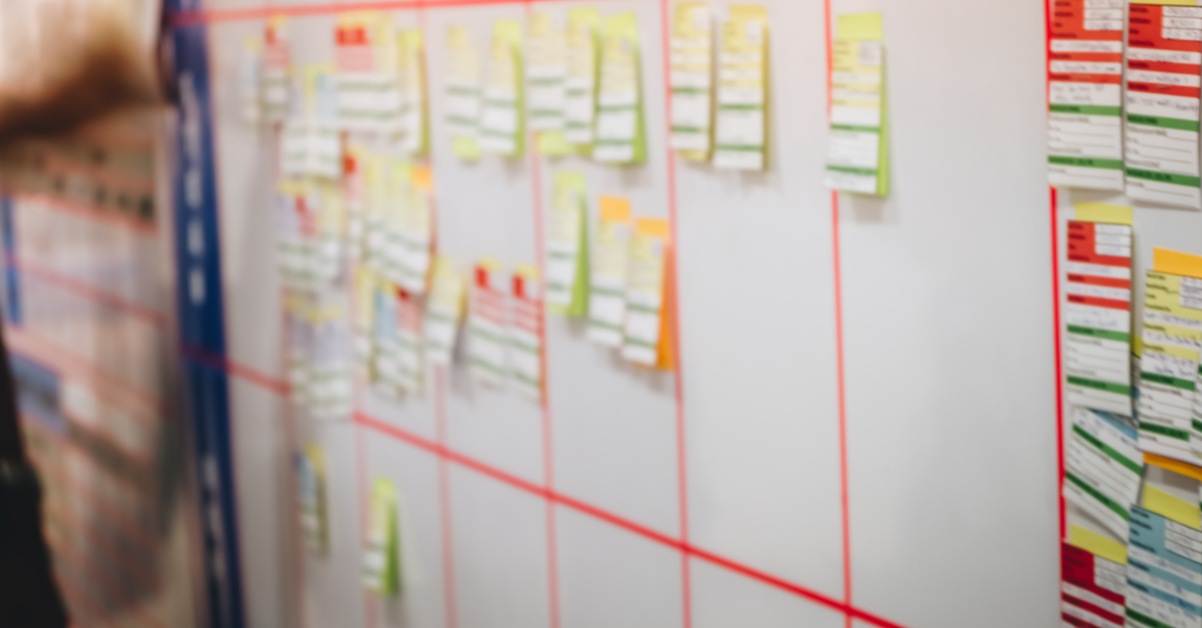Visual management boards of some kind are now basically the norm in all factories belonging to a multinational group, so they must be effective, right?
I’m not so sure. Not that they cannot be useful (they CAN be VERY useful), but, in most cases I have witnessed, these boards just aren’t contributing as much to lean initiatives or process improvement as factory management would like them to be.
Why visual management boards are popular
People tend to be receptive to visual information. Allowing anyone to see how a given area is performing at any given time is valuable.
Not only can it show ‘wins,’ but it will also be quickly evident which areas’ performance is not at the required standard — and, in that case, the team can take countermeasures.
The information shown on the boards should match reality on the factory floor. Individual areas’ performance and issues should be reflected on the boards.
China is no different. Many factories here feel that visual management boards are expected by foreign customers.
So visual management boards in a factory are all good then? Maybe not
Visual management boards in the factory look great. But is everyone really paying attention to them?
Unfortunately, they’re very often reduced to mainly redundant ‘window dressing’ that staff routinely ignore as they just don’t contain information that they find useful in their daily routines.
Common issues that cause the downfall of visual management are:
- Management want them, but the whole team aren’t buying into using them
- An absence of standards (in terms of processes and targets)
- The information on offer isn’t used to improve processes
- Boards aren’t filled in on time or at all
- Managers don’t use the boards in meetings
If this is happening, a general apathy to using the boards also hampers future improvement as staff becomes jaded to new initiatives. And that’s a big problem.
How to implement visual management boards effectively
Over on this CMC blog post, I gave this list on how factories should proceed if they do want to implement truly effective visual management: 
- Step 1: Clarify the company’s goals & objectives.
- Step 2: Cascade those goals & objectives down to each department, each workshop, each team. Avoid assigning more than 3 objectives to the same person if you want real progress on those.
- Step 3: Train the local leaders to “keep score”, if possible on a visual board.
- Step 4: Managers then need to use a mix of persuading and enforcing to get everybody to fill out their boards.
It’s also better to ease into visual management by tracking just one indicator at a time and keeping things simple. When the staff sees that it is effective, as a proof-of-concept if you like, then you will start to get buy-in for further implementation of it in the factory.
—
I posted about this topic on LinkedIn recently, and Michel Baudin commented the following points which I think are really useful:
- There is more to visual management than boards. There are also readable equipment controller screens, the banishment of shelves above eye-level on the shop floor that block the view, signage, and on lights and boards, etc.
- A pristine board is one that isn’t used. One that is used is covered with annotations about explanations and responses.
- The design of the board matters. The one in the picture (of the CMC post mentioned) contains distracting, unnecessary features. Its title, for example, doesn’t need to be more than “Line 08.” The big red “Q” on the top quality chart also needs to go.
- The design of each chart matters. There are more useful types than shown in this example, and there have to be good, articulated reasons behind each choice You have vertical bars, horizontal bars, line plots, scatterplots, heat maps, etc.
- You can either have manually updated charts, still favored by IT Luddites, or computer-generated charts on screens with annotation capability. Printing computer-generated charts is the worst of both worlds. lacking both the human connection of manual charts and the automatic updates of electronic charts.
Another good comment from Gregory McCarthy outlined his enthusiasm for tangible boards over those displayed virtually:
The content of the data on these boards should be in itself an exercise in efficiency.
However, I believe there is a real power of the visual, physical element of production boards. Placed in the right positions they lead to more ownership of the areas and processes by operators and leaders alike.
Discussion can become a communal open debate within the workplace.
No one will see or share an app as well.
Kevin Kohls added this:
It’s often called the Haystack Syndrome, where it becomes difficult to understand why the board is there, and how it creates focus for those that need to improve performance, and have to provide the resources to help support that improvement.
Perhaps it does what they need as an information center for the people in Line 08, and that’s fine. But Line 08 is a link as part of a chain. How well is the chain performing? Is this Line the weakness link? If not, what is? And what are they doing to help out?One of the toughest problems is sub-optimization, and these boards often reinforce this (I have no idea about the details of this board, so this is not a specific criticism.) We are all hitting our targets, but the company is going down the toilet.
The simple mantra in the work I have done in improvement is Find It and Fix It. Find it is to find and focus on the bottleneck – that may not be clear from charts like this. Fix it – suggestion how to and then do – can come from anyone, and are often from other teams. The problem-solving charts, however, where focus on just the bottleneck. The dates on the problem-solving chart often tell you the effectiveness of the CI methods here!
Keesjan Engelen agreed with my wish for simplicity:
Fully agree that it’s best to Focus attention on just one improvement area. Wait with the other objective till next quarter.
BTW When I visit a factory I always look at these, very useful info on their yield rates and generally how busy they are.
—
Your turn…
How about you? What are your thoughts on visual management and its implementation in factories? Can you share any real-life examples of their success or failure?
Sofeast: Quality Assurance In China Or Vietnam For Beginners [eBook]
This free eBook shows importers who are new to outsourcing production to China or Vietnam the five key foundations of a proven Quality Assurance strategy, and also shows you some common traps that importers fall into and how to avoid or overcome them in order to get the best possible production results.
Ready to get your copy? Hit the button below:


